If you've ever had trouble, or pain holding your legs in tabletop or Teaser, you're going to really appreciate today's video!
This exercise was key to taking my practice to the next level. You’ll also get to see a shot of me doing Teaser, and while I can get my legs way up in the air now, five years ago I could barely lift them five inches!
But, the psoas will help you with a lot more than a pretty Teaser!
If you really get this absolutely core exercise mastered, it will solve all kinds of problems, like:
- Spine instability
- Low back and/or hip pain
- Problems/Pain when walking and running
- Difficulty getting off the floor
- Difficulty getting in and out of chairs
- Etcetera… almost any pain that relates to your legs and torso!
I'm excited to show you how to get all the benefits from doing this exercise the right way in today's video.
And if you follow along with the video and try this exercise, I'd love to hear how it goes; or if you have a favorite visual for finding your psoas, I'd love to hear that too! Let me know in the comments below.
Hope you're having a fabulous summer!
See you in the studio,
Sydney
P.S. – Our free mini-workshop on the foot continues to get rave reviews and it’s still available. You can read more about it and register for free access to Foot-Talk: A Powerful Foot Alignment Training


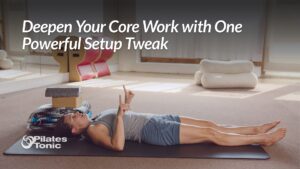
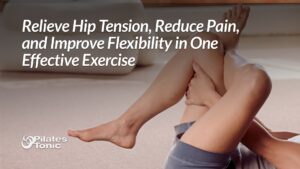
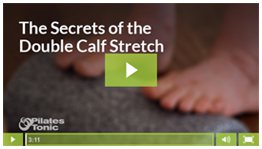

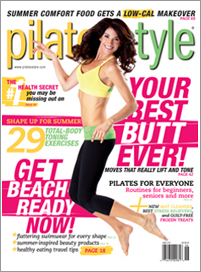
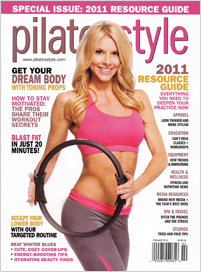
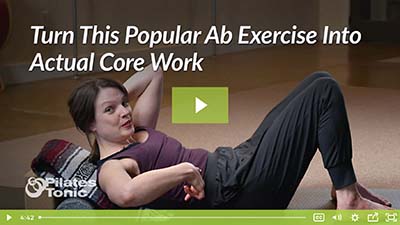
32 Responses
my thighs shakes.. is it fine??
Hi Mishie, as long as your feeling the effort deep in the backside of your abdominals it can be completely normal for your thigh to shake. 🙂
Thanks for such a great and straightforward explanation about activating the psoas. I’ve had multiple hip surgeries and always have psoas tendonitis. I believe my psoas is not too tight – but too weak and long! I also have had lumbar fusion. I love that you have differentiated the psoas from the rectus femoris/quads – and other hip flexors here. I truly believe psoas major is a stability muscle more than a hip flexor. It needs to be activated as such. I will work on your exercise here…trying to get in touch with it at at the deeper/core level where it attaches behind the deep abdomonials.
Wondering how it works with or separate from the transverse abdominals? T
Thanks again for your clear excellent video.
Hi Robyn, So glad you found this post helpful! You are spot on about the psoas major being a stability muscle. Recent research (Comerford-Mottram 2001) has shown the psoas major should be classified as a local and global stabilizer. With regards to the TA, the psoas has fascial connections with the TA, diaphragm, multifidus, and pelvic floor. It also has the task of lifting the femur head deeper into the hip socket, which brings the femur head closer to the spine and pelvic floor. This effort of lifting the femur head deeper into the hip socket activates all of the core connections, including the TA. Great question and thank you for your feedback!
Wow! That was trans-formative! Thank you for the clear explanation with visuals (pulley system) that work for me. Great video!
Thank you Heather! So glad you found this video helpful!
Such a great video! Thanks for your clear and precise information and the great imagery! Kind regards from Switzerland
Thank you Elena! Happy New Year!
I read that my psoas might be causing pain when I lift my leg because of a
tear. I had a replacement surgery 6 months ago. Should I rest it or try to activate it?
Hi Henry, Without seeing you and knowing more about the replacement surgery I can’t give specific advice. I wish you all the best and hope you are feeling better soon.
Sydney, great video. I was surprised how much I felt this in the psoas especially on my left side where I have hip and lower back pain. Would you recommend doing this daily and how many reps would you recommend?
Hi Gareth, this is an exercise you can practice daily. I recommend doing as many reps as you’re able maintain the effort coming from the “backside of the abdominals” instead of the hip crease and/or thigh. Probably somewhere between 3-8 reps on each side. Thanks for your feedback and question!
Hey Sydney!
I cannot thank you enough for how you helped
my with this information!
I stumbled over this post 2 weeks ago.
I just didn’t know that my hips were cramping.
Turned out that i used my quads way to much,
and did not really use the psoas correctly.
(Always thought my Psoas was too strong,
but it turned out to be ‘too weak’)
This really chance my yoga practice.
Such a subtile, but powerful change.
Thank, and greetings from Germany.
Henrik
That’s awesome Henrik! Thank you so much for sharing!
Hi Sydney, really helpful video. I only very recently understood the psoas in its role of centrating the femor in the hip socket. I have FAI and a labral tear and am beginning to understand just how crucial reactivating my psoas will be to my recovery. But my muscles are really dysfunctional and even in this low-level exercise my serratus and rectus femoris just take over no matter what I do (foam rolling, squeezing towel between thigh and calf, etc.). I’m wondering if you have any further tips and tricks? Also, should my back be firmly pressed into the ground, or should I try to maintain a neutral alignment for this exercise? Thank you, I only wish my own PT had understood this muscle as fully; it would be saved me a lot of time and pain.
Max
Hi Max, Here are a couple of exercises to try before practicing your knee floats to see if it helps. This one is a kneeling hip flexor stretch and this one is a really effective quad stretch. And yes to keeping a neutral pelvis! I’d also recommend bolstering your head, neck and shoulders as shown in this video. If you give these a try, I’d love to hear how it goes! Thanks so much for reaching out!
Thank you, I found this very helpful. I’ve done yoga for years and always knew I was having trouble with boat pose and other postures, in spite of having good core strength in general. My hips have been tight no matter how much i stretched them and I am very aware of holding tension there. The focus on the rear of the abdominals was enlightening. Just so I know, is there any value of holding in the hips or is it the case that we can simply let go of all the tension there without concern?
Hi Meg! I’m so glad you found this video helpful. When finding this connection, you want your pelvis to stay in a neutral position with glutes relaxed. No need to hold in your hips.Thanks for your question!
This is very helpful as a person used to using her quads. I am able to lift each leg now while engaging the deep abs, however, when one leg is in tabletop and I try to lift the other I have great difficulty keeping psoas engaged. Any tips while teying to lift the second leg. It seems I cannot keep my pelvis still.
Hi Amy, I’m glad this video was helpful! There’s a couple things you could try. First, creating an incline for your head neck and shoulders will help drop the front of your ribs into your body (if they are lifting). This helps take unnecessary tension out of the psoas, which makes the connection so much easier to maintain. Here’s a video that looks at propping the head, neck and shoulders. There’s also picture at the bottom of this post that shows another way to create an incline.
Something else to try as you practice bringing the second leg up, is to elevate your feet for the exercise by placing them on top of yoga blocks, a low coffee table or even a few books. This makes the floor higher and decreases the distance you have to lift from the ground. Once you can keep your connection and keep your pelvis stable with the feet elevated, then go back and practice lifting from the floor.
I hope these tips are helpful and I’d love to hear how it goes if you give them a try. Thanks for your question!
Hi Sydney, I finally got to try your tips and they were definitely helpful. I do have a tendency to pop out my ribs. When legs are in tabletop is there still a little space between the floor and back or is the back flat to the floor as when head is propped?
Hi Amy! There will still be some small space under you low back for your lumbar curve, but mid-back will be on the ground, or incline when the upper body is propped. I’m glad the tips were helpful!
Hi Sydney, these are great videos, thank you so much for posting them! I’m really eager to see this one, “How to Really Find and Activate You Psoas,” but for some reason. in place of a video with a start button, the space is blank. I hope you can point me to something I can do to see it. Thanks!
Hi Elizabeth, thanks so much for your kind feedback! This video should be good to go now, but please don’t hesitate to let me know if you are still having trouble viewing it.
Hello, thank you for this very interesting activation exercise. Maybe I know why you recommend holding the towel under the knee?
Hi Yaz, The towel behind the knee helps to inhibit the quadricep muscles (namely the rectus femoris). Great question, thanks for asking!
Hi! I was not able to get my foot oof the floor. My hip flexor got engaged. Psoas is really difficult to find for me.
Hi Rita, It can be difficult to find. And it’s okay to feel your hip flexors, especially at first to lift your foot. With practice hopefully you’ll feel them less and less. It helps me to stretch my hip flexors first. Here’s an exercise you might try first before the knee floats:
https://pilatestonic.com/2015/a-subtle-hip-flexor-stretch-that-releases-hidden-tightness/
Thanks for your comment!
Thanks for a clear detailed explanation! I notice such a difference in my back pain now that I’ve learned to activate my psoas.
That is great news to hear Maya, thanks so much for sharing!
My psoas is the root of my shoulder pain. Psoas shuts down and my pec minor on the opposite side steps up to fill the gap. My shoulder pulls forward – a lot – and then I have limited mobility in the shoulder, especially cross body. Took me two years to figure this one out. Now if I can just get it do it’s job! Any hints?
Hi Keith! You might find the tip demonstrated in the video linked below helpful:
https://pilatestonic.com/2014/how-to-finally-find-your-psoas-and-relax-painful-hip-flexors/
Also, bolstering your ribs, like in the video below, will make a big difference when trying the exercise above, plus you’ll also get a fantastic chest stretch:
https://pilatestonic.com/2021/undo-rounded-shoulders-and-slumped-spines-with-this-exercise/
Hope these tips are helpful and thanks for your question!